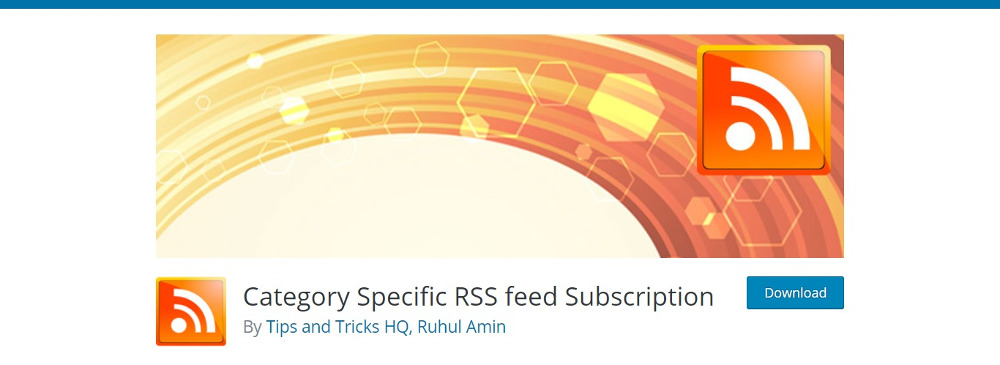

- #Category specific rss menu how to#
- #Category specific rss menu software#
- #Category specific rss menu free#
The free version of this WordPress RSS feed plugin helps you aggregate feeds from as many sources as required, and lets you display your feed anywhere on your site using shortcodes. Let’s look at three excellent plugins you can use to get the job done.įirst up, WP RSS Aggregator is arguably the most popular solution within the WordPress Plugin Directory. Of course, there is more than one solution for viewing RSS feeds within WordPress. Once you’ve saved any changes, your RSS feed will be displayed on your site’s front end at the specified location! Best RSS Feed Plugins for WordPress The options here are pretty self-explanatory. Simply drag it to your desired widget area (such as a sidebar or footer), and take a look at its settings. To do that, you’ll need to head to Appearance > Widgets within your WordPress dashboard, and look for the RSS option. This is simple to do, especially if you use a widget. Step 3: Display Your Feed on Your Site’s Front Endįinally, you’ll want to add a clickable icon to the front end on your site, in order to help visitors access your RSS feed. If the RSS feed plugin doesn’t redirect your feed properly, adding it here manually should do the trick. You’ll also notice that there are other options on this screen relating various feeds, along with a custom feed field. After this, all that’s left is to give your visitors a way to view your feed. This will redirect your feed in a matter of seconds. This can easily be achieved by using a dedicated RSS plugin, such as RSS Redirect & FeedBurner Alternative.Īfter installing and activating this feed plugin, head to the RSS Redirect panel within WordPress, and select Click here to activate redirect. Once you have at least one RSS feed URL, you’ll need to tell WordPress to redirect your feed to FeedBurner. Step 2: Redirect Your Default Feed Within WordPress You’ll see a results screen showing you every feed that’s associated with your site.Īt this point, you simply need to note the URL of any feeds that appear here. Simply enter your domain into the relevant field, and click on Next. FeedBurner is actually a valuable tool for the task at hand. This is easy to do using Google’s FeedBurner tool.ĭon’t be fooled by its retro look. Therefore, your first step is to find out the URLs for those feeds.
-Jan-19-2021-02-55-55-07-PM.jpeg)
#Category specific rss menu how to#
Let’s take a look at exactly how to do it! Step 1: Detect Your RSS Feed(s) Using FeedBurnerīy default, your WordPress site will already have one or more RSS feeds in place. How to Set Up an RSS Feed in WordPress (3 Steps)įortunately, setting up an RSS feed on your WordPress website is a simple process. This is what feedburners read and turn into proper content. You’ll then be brought to the XML file that displays the WordPress feed in its raw form. All you need to do is type in the name of your website, and add “/feed” to the end of the URL.įor example, to access the RSS feed URL for you would enter into your browser: Where Can You Find Your RSS Feed URL in WordPress?įinding your RSS feed URL within WordPress is simple. This, in addition to the enhanced portability the feature provides, means that RSS feeds can become a central tool in promoting your site’s content. Since the feed does all the work, users don’t even have to memorize your URLs. One of the main reasons is that users have to do practically nothing in order to view your content (aside from clicking on a link). Getting content in front of your audience is a key concern, regardless of your niche. Using an RSS feed, you can see which of your favorite content sources have uploaded new pieces the moment they’re available.
#Category specific rss menu software#
They work alongside ‘feedburners’, which are pieces of software that turn RSS feeds into readable content. In a nutshell, Really Simple Syndication (RSS) feeds enable users to view website content in a quick and easy-to-read format. There’s a lot to cover, so let’s jump right in! What Is an RSS Feed? In this article, we’ll take an in-depth look at what RSS feeds are, where you can find them, and how to create your own. Really Simple Syndication (RSS) feeds package up the contents of your posts, and displays it all in one convenient location. With so many social media options, however, it can be difficult to know how to coordinate everything and make it all easily available.įortunately, there’s a way to help your readers keep up-to-date with your posts, without being forced to create more social media accounts. Making sure your followers have quick access to your most recent content or blog posts is very important. Build Customized Digital Experiences on WP Engine WordPress RSS Feed Guide


 0 kommentar(er)
0 kommentar(er)
